Introduction to fast growing vegetables in the backyard: We can have fun, feel good, and be healthy by gardening in our backyard. We can consume more fruits and vegetables and get more active and involved in the backyard, allowing it to flourish with our produce. In addition, it teaches us how to grow our food and is enjoyable and beneficial for the entire family.
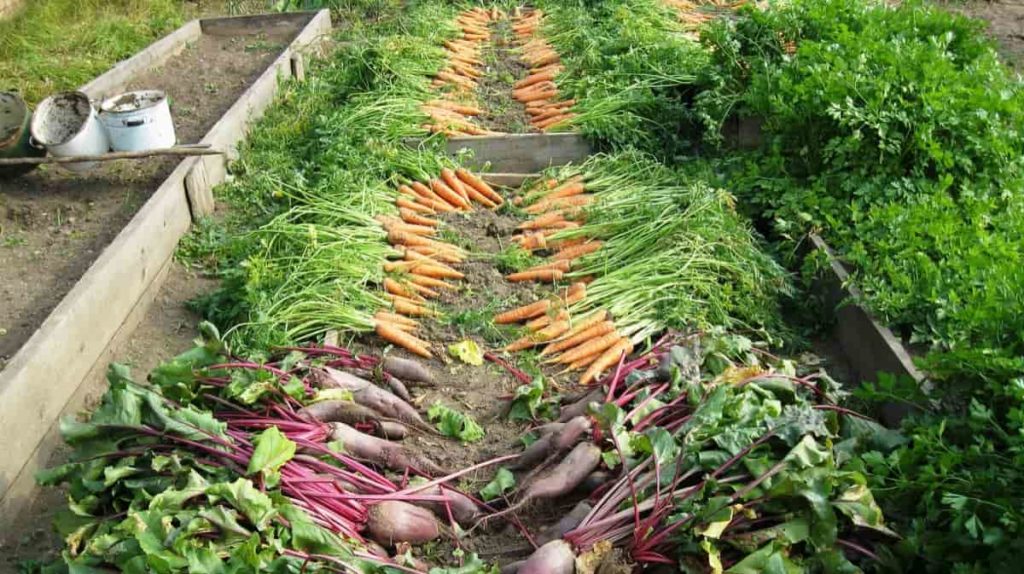
It is entirely up to you what crops we grow in the backyard. Choose vegetables that your family enjoys. If everyone enjoys gardening, everyone will be motivated to keep it up. However, there’s nothing like planting something new to enjoy. The options are endless. There may be a new favorite. There is something for everyone when it comes to gardening in the backyard.
First, choose a spot in the garden that gets the most sunlight. It is necessary to choose a sunny spot since most crops require at least 6 hours of sunlight per day to thrive. Some of the crops that thrive in the sun include tomatoes, sugar snap peas, kale, corn, beets, carrots, and radishes. Herbs like mint, dill, and rosemary are also fun to grow. These herbs also thrive in direct sunlight.
Next, we must use good soil to grow vegetables since soil provides essential nutrients. We can obtain information about good soil from our local nursery. Vegetables grow best in soil mainly composed of compost and organic matter. Next, kids can plant the seeds, which is an enjoyable step. A garden can be small or large in a pot or the ground, with drainage holes in recycled containers.
Environmentally friendly fun tip: Used disposable coffee cups (or any plastic cup that would likely be thrown away) work great for potting your plants. Create a drainage hole at the bottom of the cup. No matter where or how we decide to plant our vegetables, dig a hole small enough to fit the seeds (about the depth of your pinky finger). Depending on its size, it is possible to plant up to four seeds in the pot. For the seedlings to thrive, the roots need plenty of room. The number of seeds you can plant in a recycled cup should not exceed two.
Guide on top 17 fast growing vegetables in the backyard and tips for fast-growing vegetables
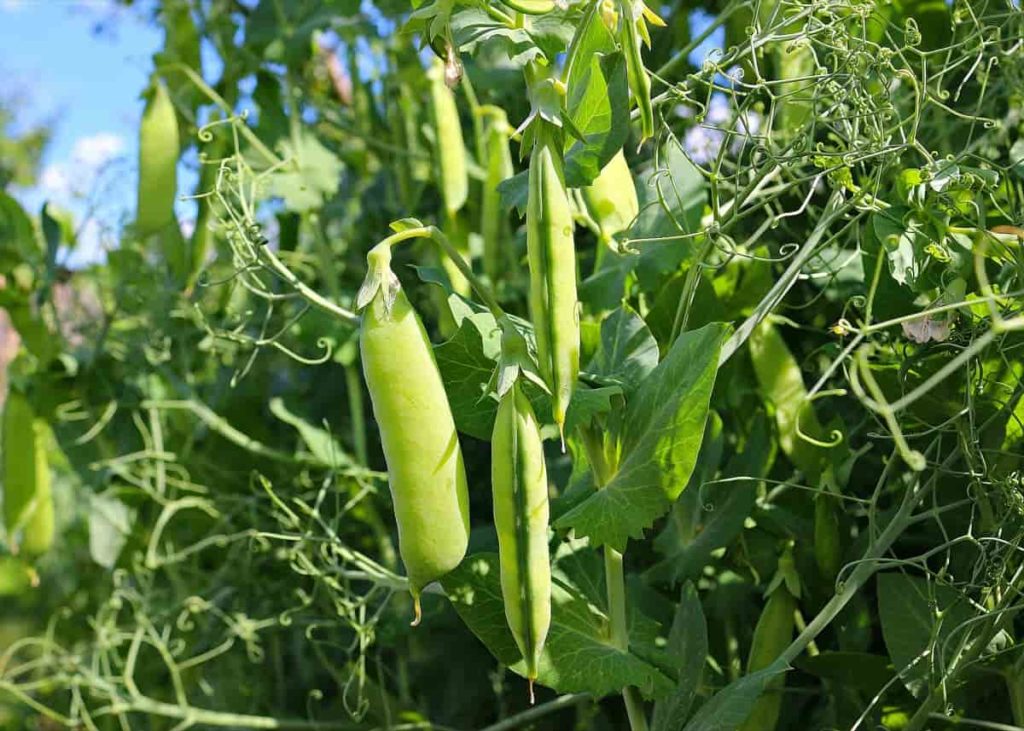
Fast growing vegetables in the backyard
Peas (edible pod)
A short growing season of 50 to 60 days makes peas one of the first crops planted in spring. Raised beds and large planters work best for peas since they require well-draining soils. Some varieties will grow much taller than 6′, so check your seed package before planting. Some varieties also need a medium-height trellis (3 – 4 ft). Peas are usually sown directly into the ground, and they should be sown thickly.
It is also possible to sprout them indoors, ensuring success in damp environments. (Tip: If sprouting indoors, prepare a shallow dish with water that has vitamin C dissolved in it. Stagger planting time every two weeks to extend the harvest. Cover the seeds as they sprout with an absorbent cloth and let them grow. Peas also add nitrogen to the soil, enhancing its health.
Lettuce
There are a variety of varieties available. Mulching is easy with large heads of lettuce like butterhead and iceberg. However, a self-mulching effect is achieved by planting smaller leafy varieties in 24″ vast swaths. Choose as many varieties as you can. As well as small lettuce transplants, you can plant them throughout your garden.
Bolting is a problem with lettuce. It occurs when the plant goes to seed, and the leaves cease to grow. Temperatures that are consistently too high lead to bolting. Plant lettuce next to a shade crop such as tomatoes or peas to prevent it from bolting. Heat-tolerant varieties are also available. Consult your local seed provider for information on cultivars best suited to your area.
Broccoli
Because of its nutritional value and a long period of productivity, this member of the Brassica family is highly valued. In addition, broccoli is so expensive to buy that growing it at home can help you save money. Broccoli can also be overwintered, resulting in new shoots with small clusters, greatly appreciated during the winter months.
Brassicas are usually planted directly into the ground or in small starter pots. Seedlings are better protected from birds and slugs in starter pots, and they can be brought indoors in inclement weather until they are strong enough to transplant. They are planting brassica crops in different beds each year (rotation). Plant broccoli in early spring or late summer and mulch surrounding soil well to keep soil temperatures down.
Tomatoes
Many cherry tomatoes, table tomatoes, and paste tomatoes. Almost all plants will need tall stakes when transplanted, which should be set as soon as possible. Wire cages or other methods of staking, however, are preferred by some people. As the plants grow, they will need to be tied to the stakes, which takes time. It is best to keep the leaves dry when growing tomatoes.
In case if you miss this: Organic Backyard Vegetable Gardening
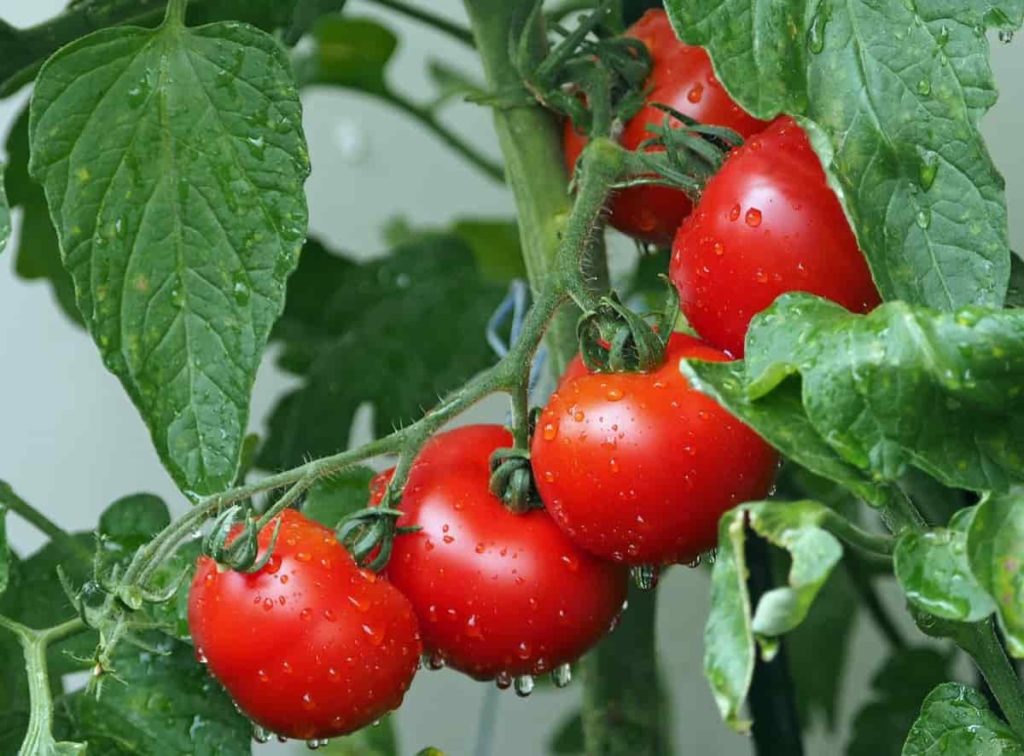
Plants are covered with clear plastic sheeting in a simple shelter left open on the sides. By adding a layer of mulch, rain splashes will not wet the lower leaves, and moisture is retained in the upper soil. The tomato plants are planted in soil amended with grass clippings while the transplants grow in pots. The soil is warmed by transplanting the young seedlings, and the new growth is stimulated.
Garlic
As long as the winter is mild, garlic is planted before the frost in the fall. Planting garlic in the spring is also possible. The cloves are planted 2 inches deep. The bulbs can be lifted when the leaves die after the plant blooms. Reserve a few heads for the following season. You’ll only need to purchase certified disease-free garlic bulbs from a seed catalog for the initial planting.
Onions and leeks
It takes 3 – 5 months to mature in moist soil with good drainage. The time it takes to mature an onion will be shortened by 4 – 6 weeks if onion “sets” or small bulbs are purchased. The earlier you plant onions, the better they will grow. Providing warmth to large bulbs can be accomplished by covering the shoots with a row cover or cloche and tilling in grass clippings before planting. When the onion tops turn yellow and wither, harvest them.
Peppers
Peppers are quickly grown in small pots and transplanted outside or in a greenhouse as soon as they warm enough. Pick off any small peppers that form on the transplants, or the plant will grow slowly. Pick the green peppers as soon as they reach maturity to stimulate new fruiting and increase yields. If you want the peppers to sweeten and turn red or yellow, you can leave one or two plants unpicked. However, plants will yield fewer peppers if left unpicked.
Swiss chard
Swiss chard is both delicious raw or cooked, as it has few pest problems and a long growing season. You can grow chard from transplants or direct sow it in garden beds. Colorful varieties are now available, too. Avoid planting chard near spinach and beets to discourage leaf miners. Leaf miners can also be protected from chard by row covers.
Squash (summer and winter)
Summer vegetables such as zucchini and yellow squash are compact, easy-to-grow plants. The winter varieties require more room to grow, but they are highly valued as winter vegetables. Squash plants are best planted individually in a small backyard, and winter squash needs to be planted with ample space for their long vines and large leaves to grow.
A sturdy trellis can grow squash vertically if there is limited ground space. Squash plants must be tied to the trellis by their stems to support their weight as they grow. Seedlings should be started indoors in small pots to protect them from squash bugs. Then, when the soil is warm, they are transplanted outside.
Beans
Green beans are generally classified into bush beans and pole beans—plant bush beans in front of taller plants like tomatoes to grow to about knee height. Pole beans are tall plants that require trellises or poles to support them. It is best to grow pole beans at the back of the garden so they do not shade other plants. As beans do not do well when transplanted from smaller pots, they should be sown directly into the ground from seeds. Planting and harvesting should be separated by a more extended period.
Potatoes
Potatoes are increasingly viewed as a more nutritious alternative to bread due to their high cost. You can grow potatoes in marginal soil, and they yield a high yield for a small amount of space. Before the last frost, potatoes of the early or “new” variety are planted in mid-spring. Potatoes of the winter variety are planted in the summer. From cut seed potatoes or old, sprouting potatoes, potatoes are planted directly in the ground.
In case if you miss this: Organic Vegetable Gardening in the Balcony
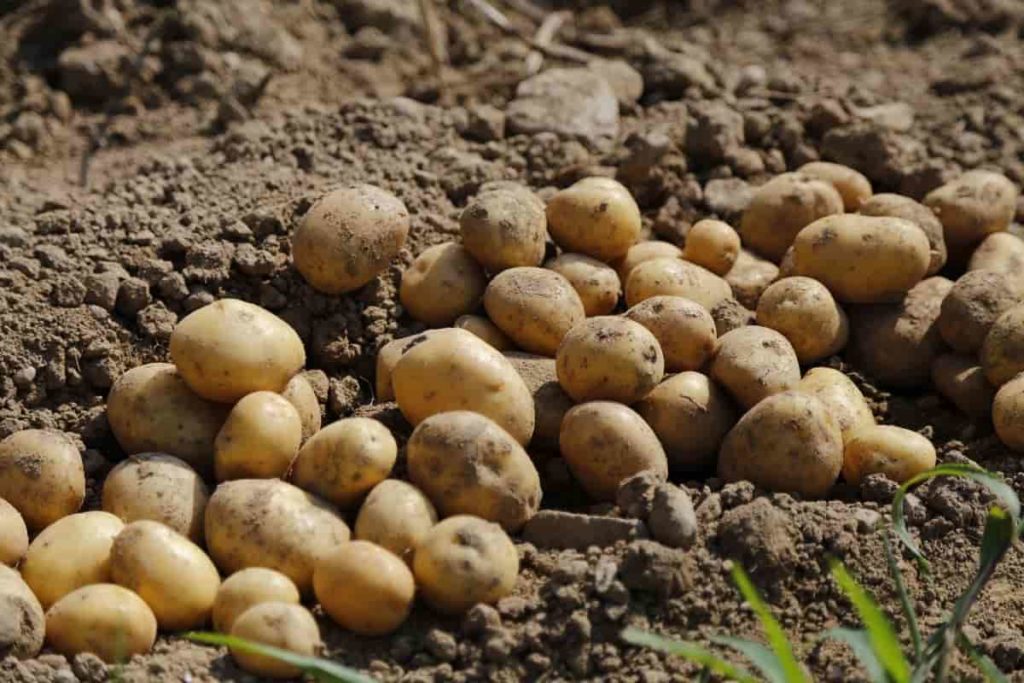
Bush cucumbers
Locally recommended varieties of slicing-type cucumbers are available. Small gardens will benefit from bush varieties. When the ground is warm, start seeds in pots or sow directly. Plant 2 – 3 seedlings in a small hill made of rich, moist, and well-drained soil. We cut holes in black sheet plastic and set it over the seedlings to retain moisture. Cover seedlings with clear plastic or glass containers to protect them from cold spring nights and pests; remove them when the sun comes out, or the seedlings will get too warm.
Spinach beets
The ‘spinach beet’ is only a beet seed grown for its greens and is not a favorite of slugs and caterpillars. Instead, plant seeds directly in the soil and thin them out when they sprout. For salads, beets grown for greens will produce throughout the summer; harvest the leaves as needed. The leaves make for an exciting and colorful addition to salads.
Pumpkin
Growing pumpkins require a lot of space. Their vines can trail for twenty feet. Therefore, you end up with a large squash that won’t store well. Buttercup, a promising winter keeper, should be given space instead of squash.
Corn
Fertilizer is essential for corn, which is a heavy feeder. It can be difficult and expensive to keep up with soil enrichment demands. Moreover, raccoons love corn, and corn takes up a lot of space for the harvest. Therefore, it is often good to use the space for more expensive products at local farmers’ markets when corn is cheap.
Carrots
Compared to the yield, carrots require a minimal amount of space, but rich, deep soil free of stones is essential. Under a floating row cover, carrots are protected from rust fly damage. Several carrot plants, especially the baby varieties, are recommended for a child’s garden plot, but we could never grow carrots. The row cover was too challenging to anchor in winds, and the rust fly would get inside.
Radishes
It doesn’t matter if you love or hate the taste. Growing radish is an excellent introduction to growing vegetables. Unfortunately, radishes also overgrow, taking only 20 days to reach their full size. If you still don’t like them, give them to your neighbors or eat them yourself.
In case if you miss this: 20 Vegetables to Plant in Winter in India
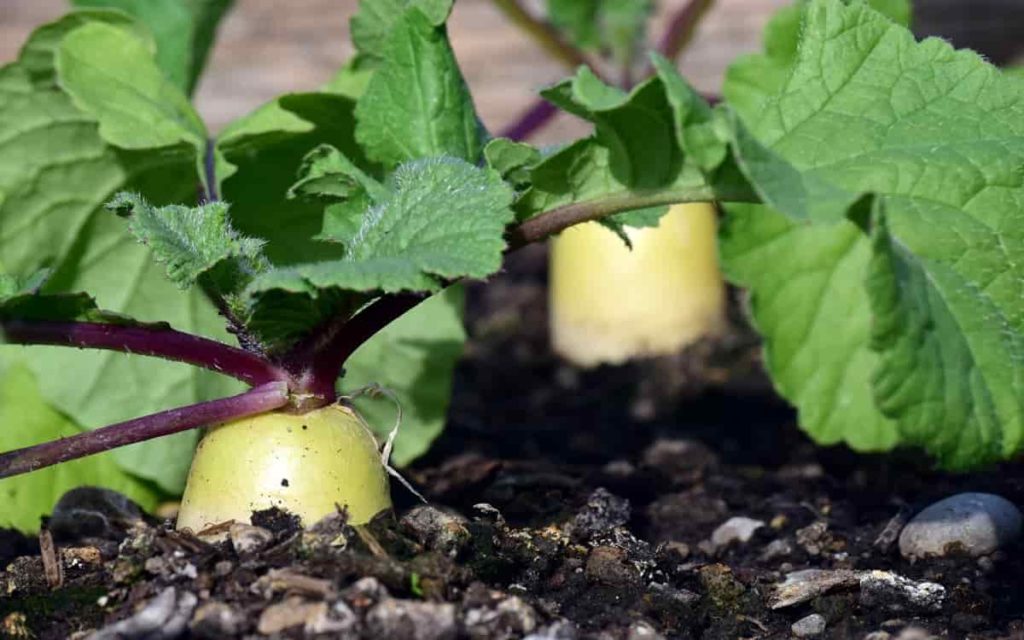
Tips for fast-growing vegetables in the backyard
Light
Vegetables, particularly those that bear fruit (cucumbers, squash, peppers, tomatoes, for example), need lots of sunlight to thrive. The ideal site should receive at least eight hours of direct sunlight per day. Edibles such as leafy crops and herbs can still be grown.
Keep it small
A vegetable garden can be low-maintenance, but it isn’t no-maintenance. Do yourself a favor and stick with a small plot for the first year or two. You can start with a 4 x 8 footbed and grow a few crops on it (see the next point). Plant container-friendly veggies and herbs on a sunny deck in pots or window boxes if you want to start even more negligible.
Choosing your plants
Your first vegetable garden will make you want to grow everything. However, suggest you grow four to five types of vegetables well for your own sake. You’ll end up with a smaller harvest if you try to stuff too much into a small space. You can boost yields by succession planting. Follow up the first planting with another one after it’s harvested. You might plant summer beans with spring lettuce, for instance. You can extend your harvest season by succession planting.
Bringing on the blooms
Most bugs are your friends, despite what you might think. It’s true. Add clumps of insect-friendly plants, such as veggies and herbs, to your garden for better crop pollination.
Water, weed & feed
Although it seems obvious, new veggie gardeners may not know when and how much to water. Most established crops can survive on one to two inches of water per week, but newly seeded beds will need frequent watering. By mulching your soil with several inches of straw or shredded leaves, you can conserve water and reduce the need for rinsing. Plus, the mulch inhibits weed growth.
When grown in infertile soil, quick-growing crops like lettuce and radishes won’t require additional fertilizer. In contrast, long-term veggies like tomatoes, winter squash, and eggplants will receive a boost several times over the growing season. You can support growth and encourage the biggest harvest by giving them water-soluble organic food on occasion.
Soil
You can’t have a successful and productive vegetable garden without rich, healthy soil, so don’t skip this step. A soil test will give you an idea of your soil’s fertility and pH and show you what types of fertilizers and amendments will thrive in your plot: Garden, homemade compost, organic manures, and organic fertilizers like kelp and alfalfa meals.
In case if you miss this: Top 30 Fast Growing Vegetables at Home

Commonly asked questions about fast-growing vegetables in the backyard
1. How can I prepare my backyard for a vegetable garden?
- Choose a sunny location Vegetables to thrive in direct sunlight for at least eight hours every day
- Plant roots need oxygen, and vegetables can be submerged in low-lying areas
- Keep away from old houses’ perimeters
- Keep convenience in mind
2. What is the best way to start a vegetable backyard garden for beginners?
- Place it correctly
- Keep your eyes on the sun
- Stay near the water
- Create a great foundation
- Think about containers
- Pick the right plants
- Identify your zone
- Know when it is frosty
3. How can you plan a vegetable backyard garden?
- Planning a garden requires taking the environment into consideration
- Each plant grows to a different size and shape.
- Shade amount
- During this time, flowers are blooming
- The maintenance of the equipment
- Resistance to parasites and disease
4. How do you care for your backyard vegetable plants?
Adding organic mulch around your vegetable plants suppresses weeds, improves soil health, maintains soil moisture, reduces watering, and keeps vegetables cleaner. You can also use needles, leaves, straw, and grass clippings from an untreated lawn.
5. What is the best way to clean your backyard vegetable garden?
- Make sure the apparent matters are taken care of first
- Use a rake to rake your lawn
- Garden beds need to be maintained
- Examine your tools closely
- Prepare the shed
- How to Grow Hibiscus from Flower
- Plantation Ideas for Home Decoration: A Beginners Guide
- Flower Garden Designs and Layouts for Beginners
- Planting and Spacing Techniques in Papaya: A Beginner’s Guide
- Growing Gold: Essential Techniques for Planting Pineapples
- How to Make Kalanchoe Plant Bushy: Home Remedies and Solutions
- 11 Reasons Why Your Gardenia is Not Blooming: Home Remedies and Solutions
- Eco Elegance: The Guide to Designing a Drought-Tolerant Landscape
- Gardening on a Slope: Strategies for Hillside Landscaping
- Nourish and Flourish: Top Organic Mulches for Thriving House Plants
- Everything You Want to Know about Indian Mogra Flower: Discover Uses and Growing
- Green Thumb Success: Expert Tips for Cultivating Greenhouse Pumpkins All Year Round
- Maximize Growth & Flavor: The Ultimate Guide to Companion Planting in Herb Gardens
- How to Control Rhododendron Problems Naturally: Home Remedies and Organic Ways to Fix Them
- Natural Magic: The Remarkable Benefits of Cinnamon for Plants
- Best Steps to Revive Dying Tulip with Natural and Organic Treatment
- 10 Reasons Why Your Angel Trumpet is Not Blooming: Remedies and Treatment
- How to Fix Periwinkle Leaf and Flower-Related Problems: Natural Remedies and Solutions
- How to Fix Zinnias Leaf and Flower Problems: Discover Natural and Home Remedies
- Organic Steps to Induce Lemon Tree Flowers: A Comprehensive Guide
- Bloom Booster: Crafting the Perfect Homemade Bougainvillea Fertilizer
- Optimizing Growth: A Guide to Applying NPK Fertilizer for Potted Plants
- 10 Best Homemade Fertilizers for Rubber Plant: DIY Recipes and Application Method
- How to Boost Female Pumpkin Flowers: Effective Steps for More Flowers and High Yields
- Transform Your Indoor Garden: Top Benefits of Pink Salt for Houseplants
- 10 Best Homemade Fertilizers for Peacock Plants (Calathea): Easy DIY Guide
- Unlock Blooms: 9 Reasons Why Your Potted Chrysanthemum is Not Blooming
- 8 Reasons Why Your Potted Hibiscus is Not Blooming: Fix it with Simple Solutions
- Unlock Blooms: 9 Key Reasons Your Potted Frangipani Won’t Flower
- 10 Reasons Why Is My Ice Plant Not Blooming: Remedies and Treatment
- 10 Reasons Why My Potted Hydrangea Not Blooming: Treatment and Remedies
- 10 Reasons Why is My Wisteria Not Blooming: Remedies and Treatment
- 10 Reasons Why is My Goldfish Plant Not Blooming: Remedies and Treatment
- Maximize Your Space: Ultimate Guide to Balcony Gardening with Grow Bags
- 10 Reasons Why Your Iris is Not Blooming: Remedies and Treatment
- 10 Reasons Why Your Anthurium Plant is Not Blooming: Treatment and Remedies